The main barrier to wider usage of continuous variable utility analysis is the lack of viable, logical approaches for calculating the dollar value of job performance. The crucial factor is the variance in job performance. The creation and application of expensive, valid selection techniques are not required if all applicants are expected to produce nearly the same level of productivity in absolute terms.

Dollar Value Of Job Performance
An application of utility analysis to personnel activities is presented in this article as a method for estimating the variability of job performance in dollars. How can we determine the dollar value of the output produced and the cost of having any staff’s services to the company?
Utility Analysis-Methods
In simpler terms, a net dollar benefit (or loss) would result from the difference between benefits and costs.
Criterion Development Assumptions
The methodology focuses on job analysis and performance evaluation as well as the fundamental economic principle that a commodity’s value is determined by its market price. An organization’s willingness to pay for work equals the worth of that labor to that organization.
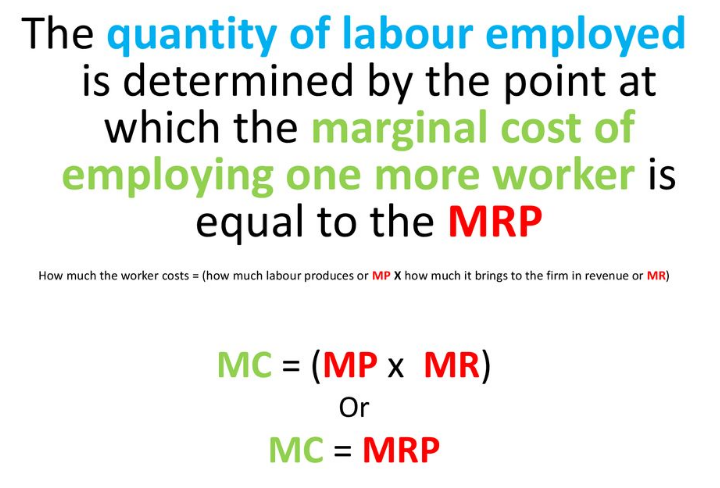
Marginal Revenue Product (MRP)
The intersection of the labor supply and demand functions in a given labor market is what determines pay levels (and employment levels), in accordance with the marginal revenue product (MRP) theory. Until the last employee employed equals the company’s marginal revenue product, each company will keep on hiring individuals.
The marginal cost of labor to the employer currently equals exactly the marginal revenue it produces (there is no more profit to be made). If the company continues to hire after this point, it will be losing out on potential profits. Beyond this point, it will lose money if it continues to hire. Therefore, the employer maximizes profit when the employee’s marginal cost equals the MRP of the last hire.
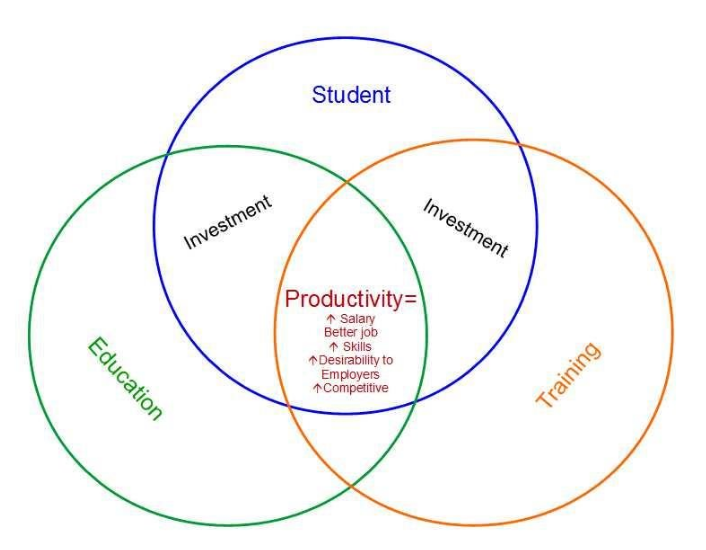
Human Capital Theory
Human capital theory (Becker, 1964) contends that someone who offers their services on the market is worth more to the extent that they have invested money, time, and other resources to develop the necessary skills. A wage rate is determined by the estimated productive value of an individual, which is derived from the estimated value of that individual’s human capital.
In essence, this method rates deviation from the benchmark value of labor, which is the cost of labor, in order to generate a dollar-valued index of job performance variability.
Criterion Development Procedures
There are two phases: a job analysis phase and a performance appraisal phase. During the job analysis phase, a description of the employee’s job—key responsibilities that account for at least 10% of total work hours over the course of a year—is given to the employee’s immediate supervisor in terms of major activities. There can be a maximum of 10 major activities. Principal activities are derived from an extensive job valuation study of managerial jobs.
Four factors are used to evaluate each principal activity.
- Time / Frequency
- Difficulty level
- Importance
- Consequence of error
Each dimension is graded on a 0–7 numerically and verbally anchored scale, with the exception of time/frequency (0%–100%).

The supervisor evaluates the person in question during the performance appraisal phase based on how successfully he or she completed each major task. Using a scale from 0 to 200, a score of 100 points was considered to represent typical average performance.
A score of 200 meant the employee outperformed 99% of those the supervisor had observed performing the task, while a score of 50 meant the employee outperformed 25% of those he or she had observed. A score of 0 meant that the worker was the worst at the task that the supervisor had ever witnessed. The rationale of the performance evaluation scale refers to the behavior of the group, not the behavior of the individual, hence the mean salary of the entire group is used rather than the income of each individual.
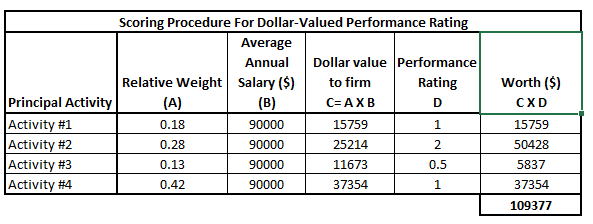
Cascio-Ramos Estimate of Performance In Dollars (CREPID)
Only the job analysis ratings and the performance appraisal ratings must be provided by supervisors for the CREPID method. In the Cascio-Ramos estimate of SDy, the annual salary for the role is divided among the principal activities of the role.
CREPID involves a minimum of eight steps to estimate each incumbent’s Yᵢ, ‾y, and SDy :
- The primary tasks and activities (PTs) carried out by the work should be identified. According to Cascio and Ramos (1986), this covers all PTs that account for at least 10% of the total job time.
- Find out how frequently each PT is conducted and how important it is. As long as the same scale is used for frequency and importance, ratings can be given on any scale (for instance, 1–7 point scales).
- Multiply importance rating by frequency rating.
- Take the average salary for the target position (in our example it’s 1.5 CR) and distribute the funds among the PTs according to the sum of the importance and frequency ratings from Step 3.
- On a scale of 0 to 200, rate each incumbent’s current performance on each PT. Then, divide that number by 100 to convert it to a scale from 0 to 2.0.
- Multiply each 0 to 2.0 point PT performance rating for each incumbent by the monetary value that was given to that PT in Step 4 above.
- Add up all the products of all PT performance ratings and PT dollar values you just got in Step 6 for each incumbent – this will be a “best” estimate of the dollar value of each incumbent’s current job performance (yᵢ).
- In the end, determine the mean (y) and standard deviation (SDy) of yᵢ for each incumbent.
Example
Let’s use a famous cricket batsman and captain as an example, who plays for the premier league each season. His performance in the national and premier leagues, however, has been at a different level (notwithstanding the fact that the expectations of role are very different when playing a premier league).
The CREPID methodology can be used to examine a player’s “best estimated net dollar value.” The same holds true for the many employee groupings that make up a company.
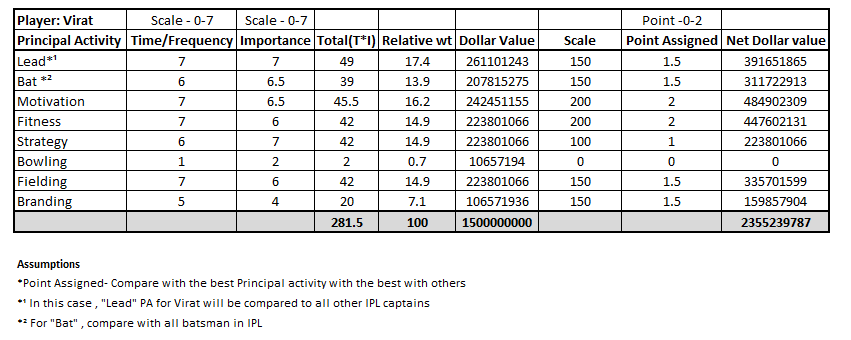
In essence, subject matter experts are used by CREPID to break down total work value (yᵢ) into value derived from the job’s primary tasks, responsibilities, and duties. The dollar value of the incumbent’s performance on each of these key tasks is estimated by combining the incumbent’s performance ratings with the key task dollar values.
A dollar value estimate of an incumbent’s total value delivered through her/his task performance is calculated by adding up the dollar value received across all key tasks. The premise of CREPID—that the average wage is equal to the average productivity—is frequently contested in economic theory and manifestly false in organizations with tenure-based pay systems, pay systems based on rank, pay systems based on hourly wages, and environments where training may have varying value depending on the organization—among others.
When done across all n employees in a given position, it allows estimation of
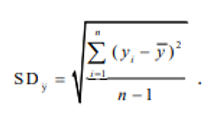
The CREPID estimations of SDy could be thrown off by at least three factors.
- Poor identification of PTs, poor ratings of PT‟s relative importance/frequency, and poor ratings of incumbent performance
- Insufficient data prevents CREPID from producing precise SDy estimates.
- CREPID estimates SDy among current employees in the job. The CREPID SDy will be incorrect if the current distribution of current incumbent performance does not closely resemble the projected performance distribution of newly hired incumbents who had been screened by the selection test.
Conclusion
In comparison to a cost-accounting system, the CREPID procedure produced substantially smaller estimates and provided conservative projections when compared to actual data. The more conservative estimates of SDy using the CREPID procedure may result from the fact that the estimates are directly linked to salaries.


